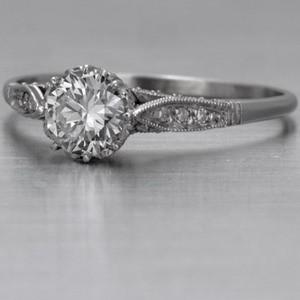Factors to Consider When Selecting Diamond Ring Settings
Choosing diamond ring settings ensures that the ring selected suits the design and taste of the wearer. Proper settings also determine the overall feel and look of the ring. The following are the factors to consider when selecting the most appropriate settings for a diamond ring. With these factors you will be able to choose the best.
The Use of the Ring
The type of setting to be selected should be determined by the purpose of the ring. If the ring is for personal use, it is advisable to match the stone to the settings and to ensure that the ring portrays personal style. If it is to be selected for a bride in an engagement, it is advisable to select a ring that is graceful in appearance.
Selection of Metal
There are several metals that can be used in selecting the settings for a diamond ring. These include platinum, silver, gold stainless steel and titanium. The selection of the metal should be based on a person’s current collection of jewelry if it is for personal use. If the ring is to be purchased for brides in engagements, it is important to consider their wardrobe collection. Pink diamond earrings are luxurious and magnificent, and will complement pink necklaces, earrings and bracelets.
The wearer’s skin tone should also be considered in diamond ring settings. It is necessary to check out how different metals look on the skin so that the right metal is used. if the ring is to be purchased for a bride, it is important to pay attention to the metals they normally wear to get an idea of the type of rings they prefer. If t is found that the bride prefers silver and gold hues, then a selection of two tone diamond rings is advisable.
Conventional or Traditional Settings
Settings for diamond rings have been found to fall into the two mentioned categories. The traditional option includes varieties like bezel, channel or prong while the unconventional varieties include pave, invisible and tension. It has been found that prong settings are ideal for engagement rings. It is, however, advisable to select a setting that will enhance the style and personality of the bride if the ring is not for personal use.
Setting Styles
Solitaire diamond ring settings feature the use of a single gem while the alternative multi-stone settings incorporate several pieces of diamonds. Solitaires are very popular due to their traditional and classic appearance especially by buyers who prefer to design their own rings. It is necessary to determine the use of the diamonds before selecting between the two options if the desired effect is to be achieved.
- A good example of the multi stone settings is the three-stone settings, which are considered as the ideal antique diamond ring settings when purchasing rings for anniversary celebrations. They are also popular because the three pieces of diamonds are taken by many to symbolize the present, past and future.
- There are sidestone ring settings are ideal for women who adore diamond rings because they feature one piece of diamond at the center and several diamonds or gems that are placed in a way that highlights the central piece.
- Vintage settings are ideal for people who like antiques because they offer sentimentality.
- Pave diamond ring settings preferred by women who like their jewelry with a look of hard or crust coating. These settings are popular because their design enhances the natural beauty of the diamonds, while using as little amount of the gem as possible.
- Emerald cut diamond ring settings are beautiful because of the effects of the green transparent color, which makes the diamond highly valued.
- Marquise diamond ring settings are popular because they are cut into attractive oval and pointed shapes and are, in most cases, faceted.
The selection of a ring setting is as important as choosing the diamond piece that fits in it. Whether the ring is for personal use or for a loved one, it is important to select the most appropriate setting to ensure that the investment is worthwhile. Style and personality are paramount in the selection to ensure that the piece selected is highly valued especially when it is to be used in an engagement.



